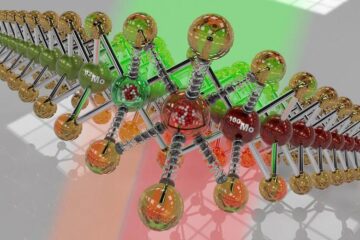Latest News

New digital technique improves mammography results
Radiologists are experimenting with contrast digital mammography to better diagnose cancer in dense breasts, according to a study appearing in the September issue of the journal Radiology.
“This advanced digital application is increasing the potential of mammography,” said the study’s lead author, Roberta A. Jong, M.D. “Contrast digital mammography makes cancers stand out against dense breast tissue that previously hid tumors with conventional film mammography,” said Dr. Jong, assistan

WSU ecologist says defense by plants to disease may leave them vulnerable to insect attack
Some of the defenses plants use to fight off disease leave them more susceptible to attack by insects, according to a Don Cipollini, Ph.D., a chemical ecologist at Wright State University.
Cipollini, an assistant professor of biological sciences, will present a research paper on this topic at the annual meeting of the Ecological Society of America in Savannah, Ga., on Tuesday, Aug. 5. Some 3,000 national and international scientists are expected to attend the meeting.
“Plant Resis

Computer Design Yields Better, More Efficient Therapeutic for Preventing Tissue Damage
The tedious laboratory trial-and-error method for refining protein/peptide-based medicines could be accelerated and complemented by an innovative in silico (on computer) protein design method, according to researchers at Princeton University, the University of Pennsylvania School of Medicine, and the University of California at Riverside.
Their findings, appearing in a recent issue of the Journal of the American Chemical Society, could drastically decrease the time it takes to move potentia

Mayo Clinic researchers discover that donor kidney protects itself in new body
A long-standing medical discussion about how transplanted organs survive in a new body has received provocative new evidence from Mayo Clinic research. It shows a donated kidney survives in a new body by turning on a protective mechanism to shield it from the hostile environment of the patient’s immune system. The results are published in this month’s American Journal of Transplantation.
Says Mark Stegall, M.D., head of the transplant team that studied kidney genes’ response

Planetary tilt not a spoiler for habitation
In B science fiction movies, a terrible force often pushes the Earth off its axis and spells disaster for all life on Earth. In reality, life would still be possible on Earth and any Earth-like planets if the axis tilt were greater than it is now, according to Penn State researchers.
“We do not currently have observations of extrasolar planets, but I imagine that in the near future, we will uncover some of these small planets,” says Dr. Darren M. Williams, assistant professor of physics and
UCSD Chemists Develop Self-Assembling Silicon Particles
A First Step Toward Robots the Size of a Grain of Sand
Chemists at the University of California, San Diego have developed minute grains of silicon that spontaneously assemble, orient and sense their local environment, a first step toward the development of robots the size of sand grains that could be used in medicine, bioterrorism surveillance and pollution monitoring.
In a paper to be published in September in the Proceedings of the National Academy of Sciences, which will











